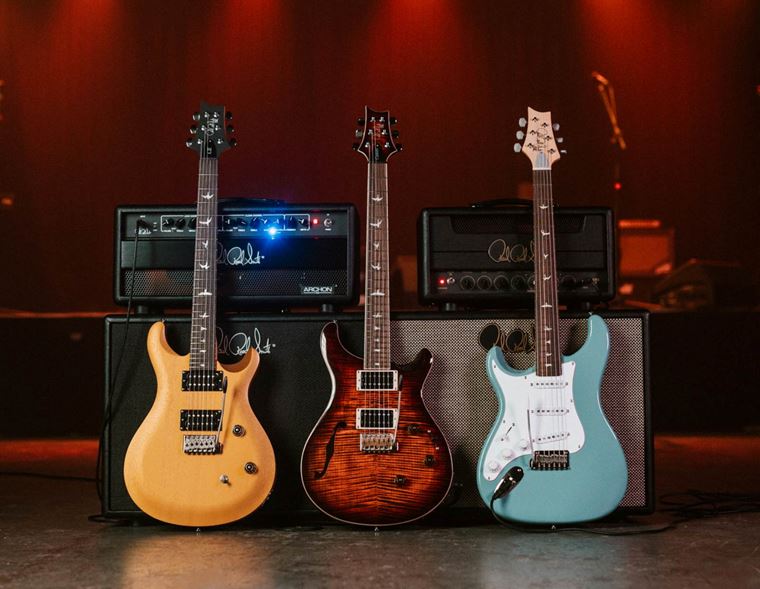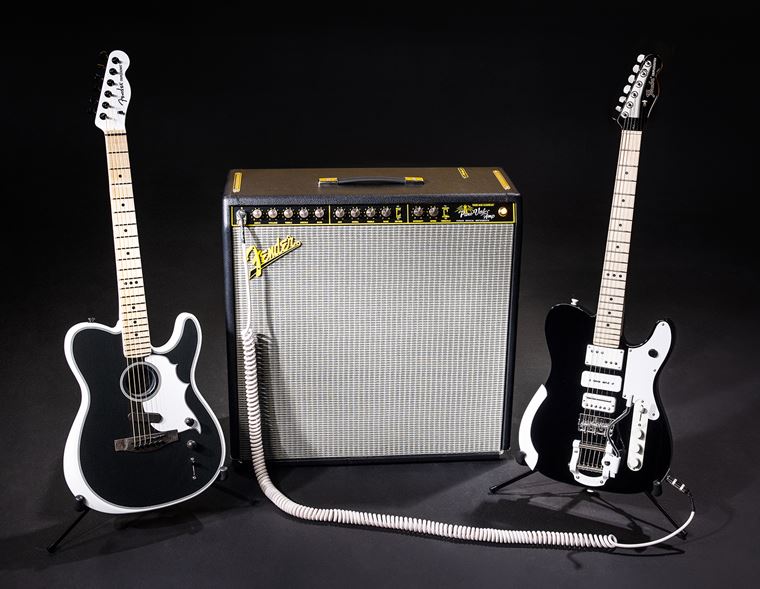Taylor Custom: Hand-picked from our Trip to El Cajon
Published on 11 December 2023
Last year, some of our staff made a trip across the pond to visit the Taylor factory in El Cajon, California. It was a momentous event, and you can read more about that in this Taylor trip blog. You can also watch our mini series of Taylor Trip videos, filmed on location and including an interview with company President Andy Powers and founder Bob Taylor!
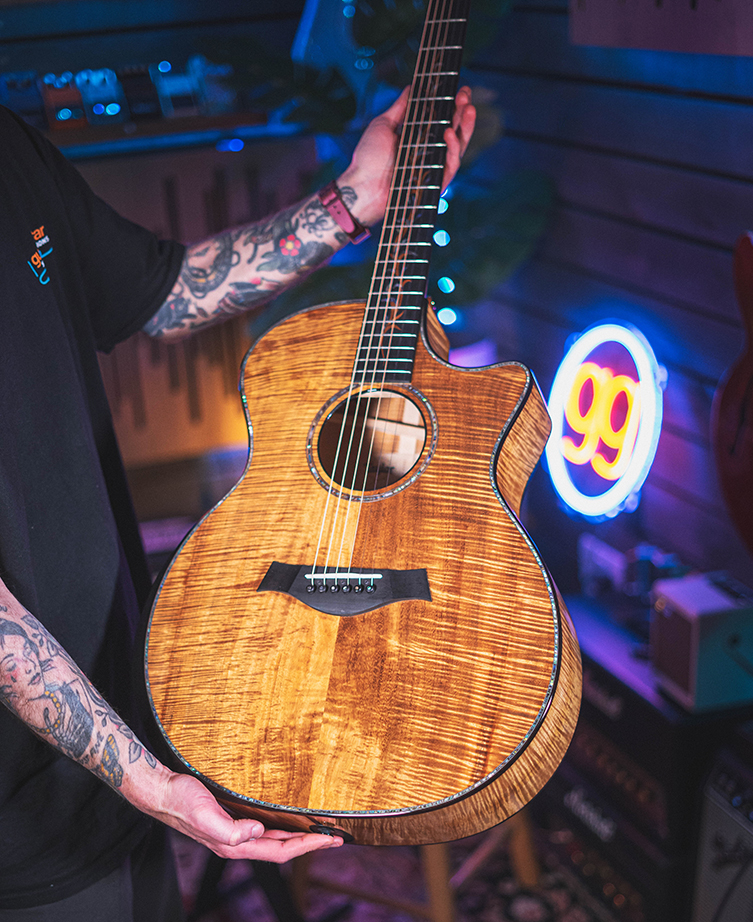
Today’s article is about another event that occurred whilst we were in El Cajon, one which we have only recently seen the fruits of! Yes indeed: whilst out there, one of guitarguitar’s most experienced product specialists personally spec’d up some custom Taylor guitars!
Custom Built Taylors
Spec’ing up a custom guitar is always an exciting experience. With electric guitars, it’s all about neck profiles, hardware and finishes, but with acoustics, you can select timber combinations, body sizes, decorative elements, bracing types and lots more.
It’s a pretty involved process, and the outcomes can vary vastly in terms of both sonics and looks.
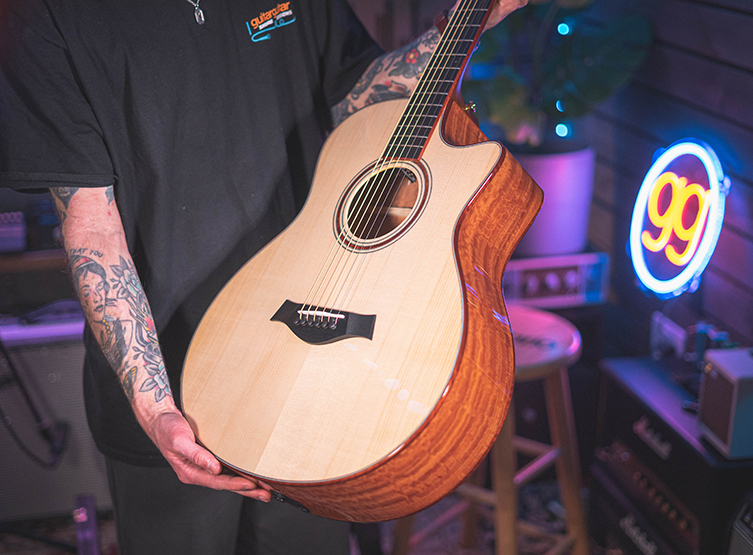
For these custom Taylors, we decided to go fully out there with the design, the woods and the features. Twelve guitars were spec’d in total, and all are entirely different. Different shapes, different wood selections, and there are even some surprises in there! Each is a one off, but today I’ll talk a little about some of the woods and some of the models, just to give you a flavour of what’s available from this most special custom order.
Red Ironbark
When spec’ing these custom instruments, we had access to a wide range of specialist tonewoods. We’re talking Honduran rosewood, Lutz spruce, master grade Hawaiian koa and more!
Four of the twelve guitars utilise a timber that you may not be so familiar with: Red ironbark. Otherwise known to Taylor as Urban ironbark, this wood choice comes from Taylor’s close collaboration with West Coast Arborists, a group whose aim is to manage woods and reclaim unused timbers from municipal and public spaces, bringing that timber new life by supplying it to companies like Taylor. Indeed, staff from the West Coast Arborists were on hand during the guitarguitar trip to educate the staff on their aims of processes. We came away as convinced as Taylor guitars, but this isn’t just a noble pursuit: Red Ironbark is a heavy-hitter in the tonewood department, as Andy Powers relates here:
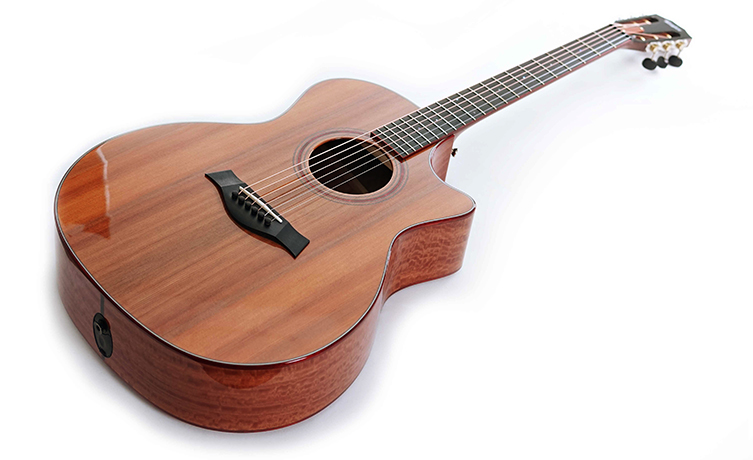
“The red ironbark has a tone-shaping quality where it produces the deep, clear sound of rosewood, but with just enough of the damping effect of ebony or mahogany that helps smooth out the sharp edges of the sound. The voice is bold, rich and sweet. It has that bell-like amplifying response of a dense wood – it’s vibrant and dynamic.
Imagine if you could take the traditional sound of a rosewood guitar, while filling and warming the midrange. It has a very piano-like character.”
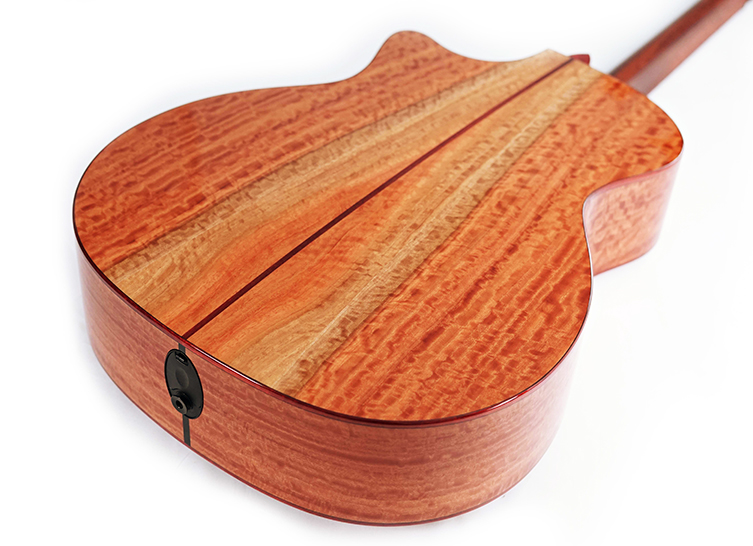
In this group of custom Taylor guitars, you’ll find Red Ironbark tops on a 12 fret Grand Concert and a Grand Auditorium, both of which use Sinker Redwood for the back & sides, which I’ll talk about soon.
Two further guitars use Red Ironbark, though this time as a tonewood for the back & sides. These guitars are wonderful Grand Pacific and a Grand Symphony Baritone, both of which use Adirondack Spruce for their tops. Adirondack Spruce is simply one of the highest quality, most resonant species of Spruce. Adirondack Spruce is known for being particularly loud, with a ‘headroom’ that allows for lots of dynamic range without having the tone ever shudder. As Bob Taylor himself puts it, Adirondack Spruce has “undeniable sweetness in every note”.
V-Class bracing and a Bloodwood rosette finish off the look for the sublime 12 fret Grand Concert model.
Baritone
Did I just mention ‘baritone’ a second ago? Yes, indeed I did. That killer combination of Red Ironbark and Adirondack Spruce just cried out for a design that would make the most of that boldness and headroom. A 27” scale Baritone was the perfect solution: an altogether larger instrument with a resonant low B note to get some really earthy tones happening! It’s a spectacular sound, and one that will fill a very specific place in your band or recordings. Get this Taylor Grand Symphony Baritone checked out!
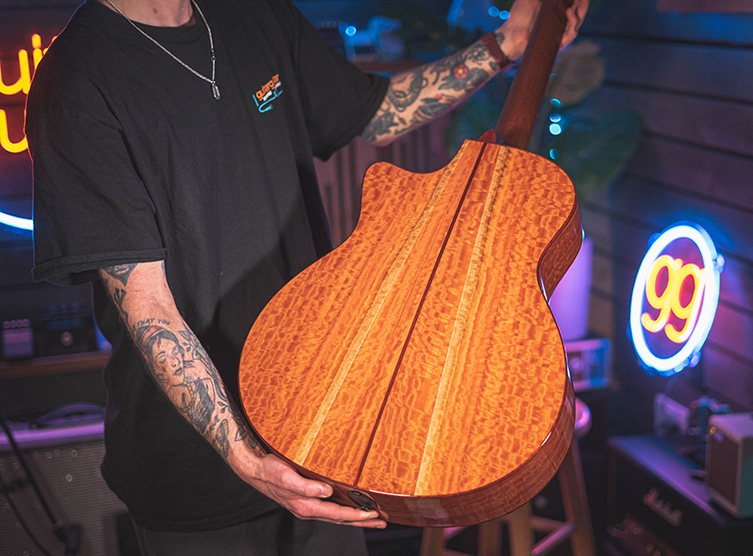
9 String Grand Symphony
Another intriguing build we were excited about was this quite lovely custom 9 string Grand Symphony.
So, how does this work? Well, it’s somewhat like half of a twelve string guitar, with the middle strings - the B, G and D - all have double courses of strings. The high E and low E & A are single strings as normal. This split is pretty easy to get used to, and gives plenty of that lovely 12-string shimmer and dimension whilst still allowing you to get a good grip on those low string riffs and runs.
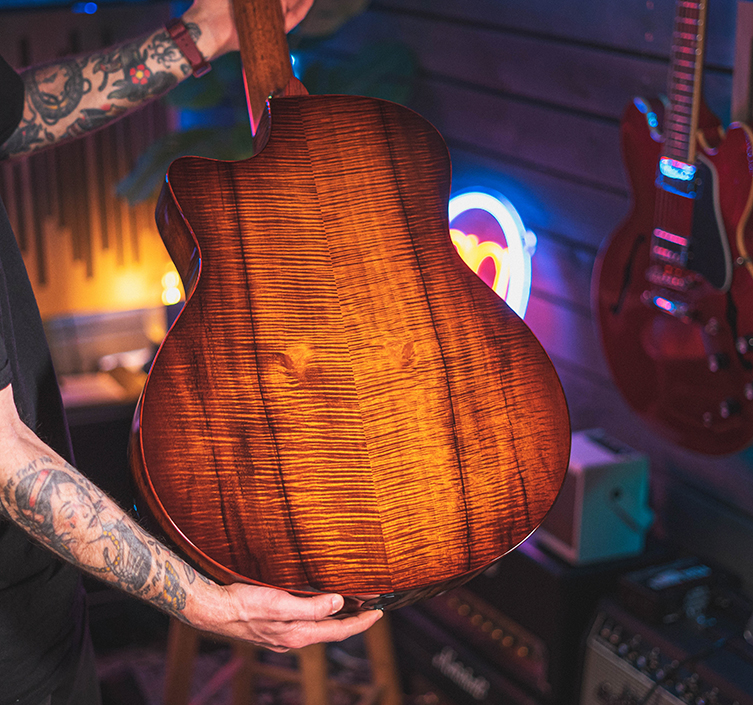
As mentioned, it’s a Grand Symphony body - Taylor’s largest - and it’s a particularly effective combination of Lutz Spruce and AA Koa, with lovely Cocobolo binding. The headstock has a Koa veneer which is a beautiful touch. We looked through a lot of Koa before hand-selecting the pieces for this guitar, and the effort was certainly worth it!
Sinker Redwood
I mentioned Sinker Redwood earlier in the article, and this timber deserves a little explanation too. ‘Sinker’ Redwood gets that prefix because the wood is cut from huge old logs that have been found and reclaimed from rivers. Some of these were initially chopped down and milled as much as a hundred years ago, and of course the wood has taken in lots of minerals from the water. Even when dried and treated, the resulting timber is dense, with a sound that’s often described by Taylor as ‘cedar on steroids’! I’ll say that there’s a lot of tonal warmth on offer, with extra boldness in the low end.
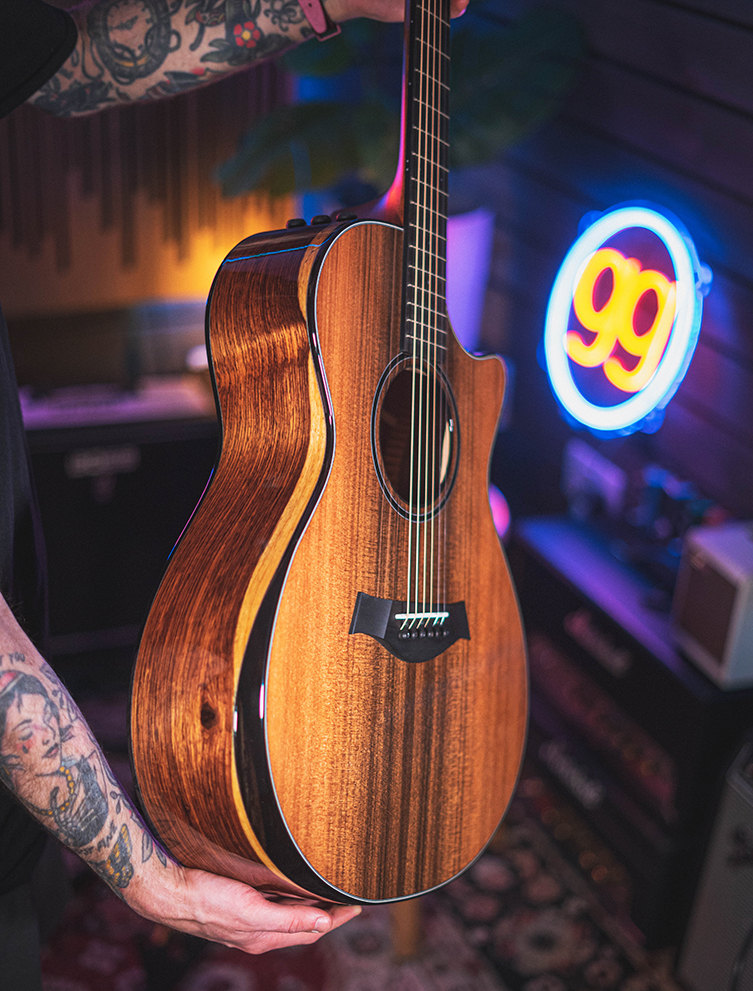
Sinker Redwood is obviously a rare timber, not to mention ‘antique’ wood, so it is a very special, valuable material to use in guitar building. The great news is that the tonal benefits - and visual beauty - more than justify it.
One-Off Custom Pieces
I’ve merely scratched the surface with my overview today. There are twelve individual custom guitars available, all with their own unique properties. Each is a piece of art, a highly effective, inspiring instrument and an heirloom for the future. The only problem is: which one will you pick?





